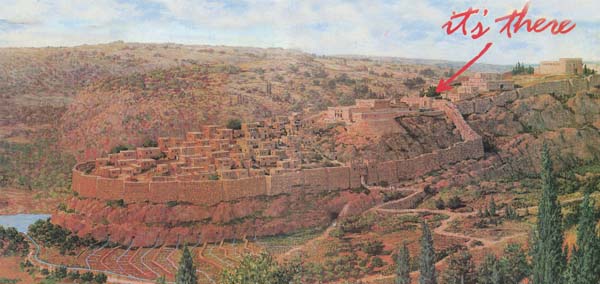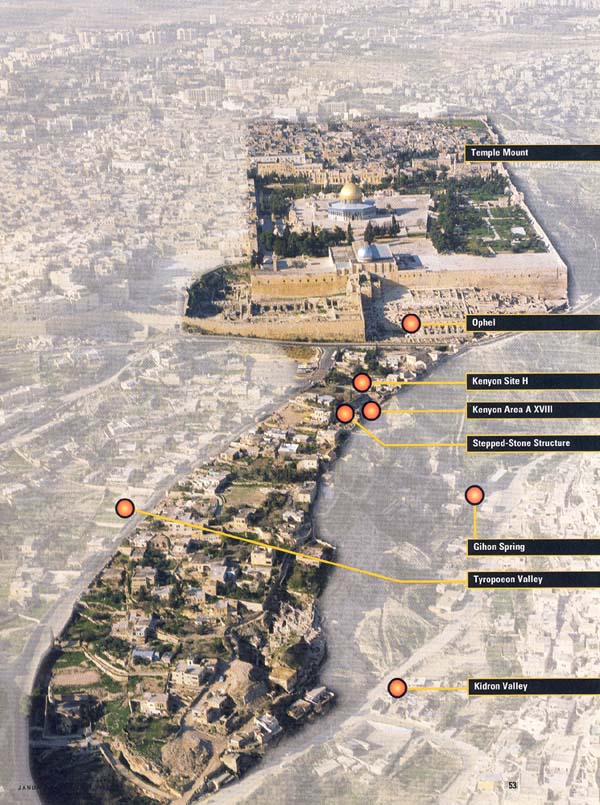
A careful examination of the Biblical text combined with sometimes unnoticed results of modern archaeological excavations in Jerusalem enable us, I believe, to locate the site of King David’s palace. Even more exciting, it is in an area that is now available for excavation. If some regard as too speculative the hypothesis I shall put forth in this article, my reply is simply this: Let us put it to the test in the way archaeologists always try to test their theories—by excavation.

The Canaanite/Jebusite city that King David conquered in about 1000 B.C.E. was a mere 9 acres on a ridge south of what we call today the Temple Mount. David renamed the city, which he made his capital, the City of David. And that is still what this ridge is called today, ‘ir David in Hebrew.
We know quite a bit about this city—from excavations, topography and the Biblical text. It was wisely chosen because of its proximity to the only perennial supply of water in all Jerusalem—the Gihon Spring, which lies to the east of the ridge near the floor of the Kidron Valley.
Equally important, this ridge is easily defensible as a result of deep valleys on three sides: the Kidron to the east and the Tyropoeon (or Central) Valley to the west and south.
Already a library member? Log in here.
Institution user? Log in with your IP address.

